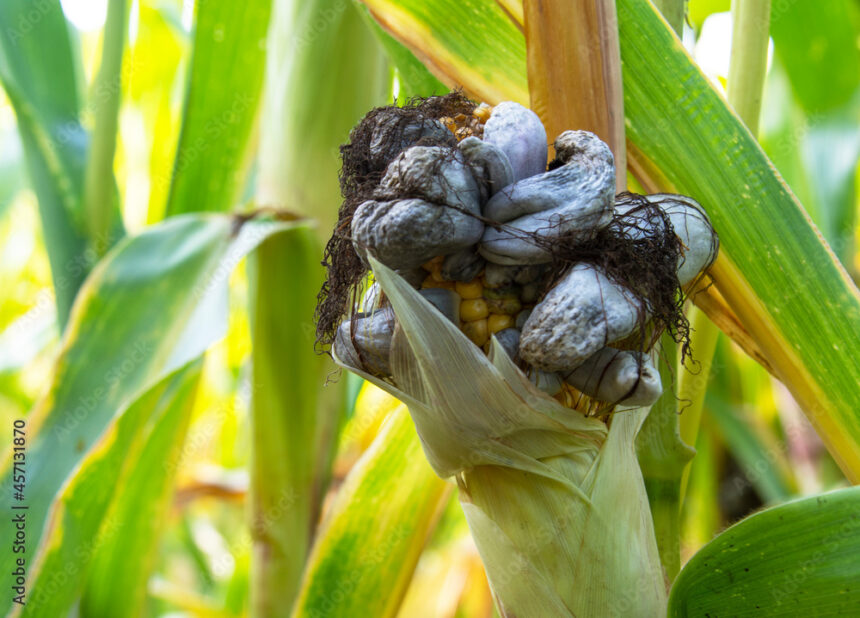Maize smut, caused by the fungus Ustilago maydis, is a plant disease that affects corn (maize) plants. Here are some common symptoms of maize smut that you should know about:
- Galls or Tumors: Maize smut typically appears as large, swollen, and irregularly shaped galls or tumors on various parts of the maize plant, including the tassels, ears, stalks, and leaves. These galls can vary in size and may be light green at first, turning into black or dark brown masses as they mature.
- Disruption of Normal Growth: The presence of smut galls can interfere with the normal growth and development of the maize plant. Infected tassels may become deformed or fail to emerge properly, while infected ears may be stunted, malformed, or have irregularly shaped kernels.
- Black Powdery Masses: As the smut galls mature, they eventually rupture, releasing a black powdery mass of fungal spores. These spores can be seen as a dark, soot-like substance covering the affected plant parts. The spores are capable of spreading to healthy plants, contributing to the further spread of the disease.
- Distorted Leaves and Shoots: Infected leaves may display abnormal growth, appearing thickened, twisted, or crinkled. Young shoots or seedlings may exhibit stunted growth and have malformed leaves.
- Reduced Yield: Maize smut can significantly reduce crop yield and quality. Infected ears may have fewer kernels or may be entirely replaced by smut galls, leading to a decrease in overall productivity.
It’s important to note that while maize smut causes visible symptoms on the plant, it does not pose any health risks to humans or animals. However, the disease can have economic implications for farmers, as it affects crop yield and marketability. If you suspect maize smut in your plants, it is recommended to consult with local agricultural extension services or plant pathology experts for proper diagnosis and guidance on control measures.







